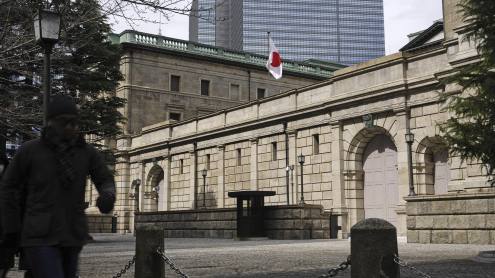When Pakistan’s central bank, the State Bank of Pakistan, raised its lending rate by 1.5% to 9% in April, analysts were prompted to ask if this marked an end to more than two years of low interest rates that facilitated large-scale borrowing by businesses and fuelled unprecedented growth in key areas such as the large textile sector.
Pakistan’s economy has remained on a high during this time, helped by the unprecedented financial support from the Western world led by the US, which is keen to reward the government of General Pervez Musharraf, the country’s military ruler, for its support for the war on terror.
During this time, Pakistan’s liquid foreign currency reserves have risen to the equivalent of almost a year of imports. That is a sharp rise from the days of the worst balance of payments crisis when reserves often sank to two to four weeks of imports.
There has also been a sustained rise in exports and imports, industrial production has gathered momentum and Pakistan’s national economic growth recovered to more than 6%, a level matched only by the growth rate during the 1980s.
The recovery has been fuelled in large part by falling interest rates, which allowed some of the best-run businesses to borrow at rates ranging from 8% to 11%, sharply down from 14%-18% until three years ago.
“Pakistan’s economic recovery is now well sustained. We’re looking at a whole series of second generation reforms,” says Shaukat Aziz, the prime minister, in an interview with The Banker.
Mr Aziz, a former senior executive at Citicorp who was brought in to government as the finance minister after General Musharraf took charge in a military coup in 1999, has overseen the country’s finances for almost five years, first from the finance ministry and for the past year from his prime minister’s office.
Good outlook for banks
He believes that Pakistani banks are poised for further growth following the successful end to the privatisation of banks that has left only one of the five public sector banks under the government’s ownership. “Pakistan represents a very cogent risk, a credible risk for our investors. There are tremendous opportunities developing here,” he says.
Bankers believe that the low interest rate environment was crucial for banks to revamp internal structures because there was intense pressure on them to seek out the most credible borrowers. “The lower interest rates have helped to create a new basis for people to borrow,” says Nasir Ali Shah Bukhari, chairman of the Karachi-based KASB group, which has interests in banking, IT and the stock market. “Lower rates raised profit margins for companies and gave many people new ideas to expand their businesses.”
The lower interest rate environment has been at the heart of the large-scale expansion across Pakistan’s textile industry. According to finance ministry officials in Islamabad, up to $6bn was invested in the industry between 2002 and the end of last year, ahead of the global quota-free regime coming in to place this January. Analysts believe that anywhere between 70%-80% of that investment came in the shape of loans from banks.
“Lower rates have helped the expansion in textiles,” says Mian Mohammad Mansha, chairman of the Nishat group, which owns Pakistan’s largest textile factory.
Bankers believe that the future of interest rates depends to a significant extent on the trend in global oil prices, which in the past year have contributed to rising inflation in Pakistan. This has intensified concerns about rising poverty in a country where almost a third of the 150 million population lives below the poverty line.
Ishrat Hussain, governor of the State Bank of Pakistan, agrees that the task of working to revive the economy and give a lift to different sectors, including banking, “remains daunting” in view of the widespread prevalence of poverty. The government has set a target of halving poverty in the next 10 years.
However, Western economists warn that the recovery in the economy must be backed by a large variety of measures to give incentives to the poor. “The risk is that as long as you have such a large population of poor people, they would feel as if they are on the periphery. There have been cases of countries where rising poverty has given rise to social unrest,” says one Western economist in Islamabad.
Project finance
Mr Hussain believes that Pakistan’s position in relation to its surrounding region creates opportunities for financing major projects, such as ambitious government plans to oversee the construction of a gas pipeline from Iran to Pakistan, going onwards to India. The financing of such large projects creates the prospect of large numbers of new jobs for the relatively poor, which would help to begin addressing the issue of poverty, he says.
“In the past, the gas pipeline was not possible because of our political differences with India. But times are evolving,” he says, referring to the year-long Indo-Pakistan peace process, which has made businessmen optimistic about the future of the pipeline. The estimated cost of the project is up to $3.5bn.
Mr Hussain says that a number of reforms in recent years, ranging from banks being forced to reduce their bad debts to tighter regulations against money laundering, “have helped Pakistani banks to mature”. Internal reforms in the central bank have improved the quality of the regulatory environment, says Mr Hussain, who is due to complete his term as central bank governor before the end of the year.
Challenges ahead
Pakistan’s banking sector, despite undergoing transformation in some ways, still faces a number of challenges. On average, only one in five or six Pakistanis have a bank account. Many people rely on informal ways to manage their finances, such as keeping money with money lenders in rural areas or keeping their savings in commodities that can be sold when cash is needed.
Falling interest rates have also been widely criticised by pensioners and others who routinely locked cash in fixed deposits. They received annual returns ranging from 14%-15% until 2000, when the government in conjunction with the central bank began encouraging a scale back of interest rates.
“There is transformation but then there are also unresolved issues in Pakistan,” says the country head of a foreign bank in Pakistan. “Realistically, you’re looking at just a part of the population – a minority that has a stake in whatever quality of banking you offer.”
However, others believe that a transition is beginning in the banking sector as leading banks make increasing investments in new technology to improve internal efficiency with increasing emphasis on quality controls. Businessmen say that banks have successfully reduced the time for internal remittances between Pakistani cities. “Remittances between the main cities took anywhere between five to seven days in 2000. Now, this is all down within 24 hours,” says the head of the foreign bank.
Automation gains speed
Naveed Khan, country head at Dutch bank ABN-AMRO, who serves as chairman of the central bank’s electronic clearing house task force, says that Pakistani banks are moving fast towards increased automation. “About four years ago, we had 350 fully automated bank branches across Pakistan and there were 100 ATMs in the country. Now there are about 4000 automated branches and about 1000 ATMs. That is quite a lot of progress,” he says.
Mr Khan agrees, however, that the pace of technological change in Pakistani banks must be driven by other factors – such as the quality of internet services in the country – before such developments as online banking from personal computers come in to effect. Although there has been a significant increase in the number of internet services in the past five years in Pakistan, unresolved issues include speed and reliable firewalls to provide foolproof protection.
“Technology in the banking sector has taken a quantum jump in Pakistan in these past few years,” says Mr Khan. “More developments have to take place before we can be at par with the Western world.”
BANKING AND THE STOCK MARKET
There are concerns in Pakistan about the effect that lower interest rates have had on companies raising equity from the stock market. The government has repeatedly urged investors in the past three years to float new companies on the Karachi Stock Exchange to give an impetus to the development of stock markets in the country.
“With bank loans available at low interest rates, nobody would even think of going to the capital markets,” says Tariq Hasan, chairman of the Securities and Exchange Commission of Pakistan, the main stock market regulator.
In Karachi, leading stock brokers believe that the recent stock market crash, which pulled down the market’s 100 index by more than 20% in March, promises to divert new investments from the stock market to bank deposits.
“If interest rates rise in the coming months, there’s going to be a lot of shift from the stock market to people heading back to depositing funds in banks,” says one leading broker.











